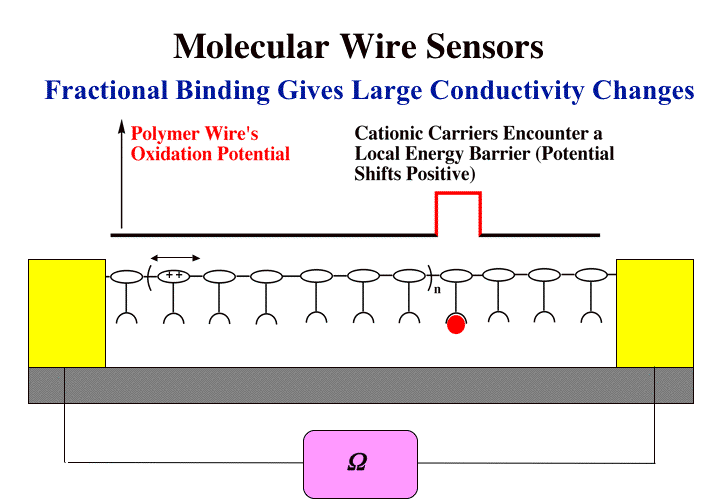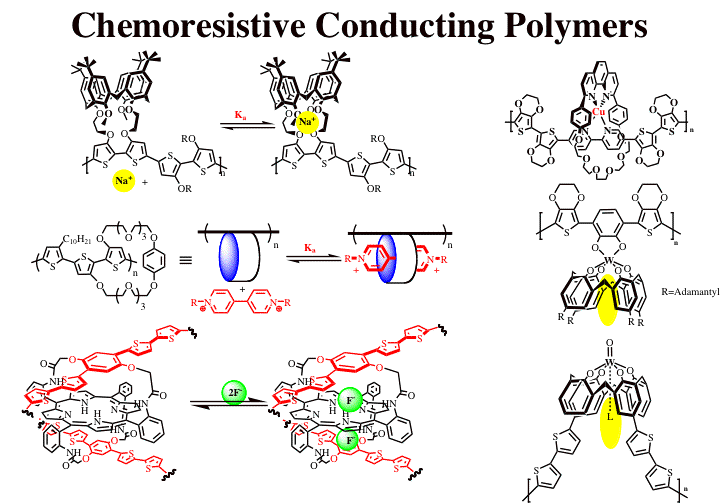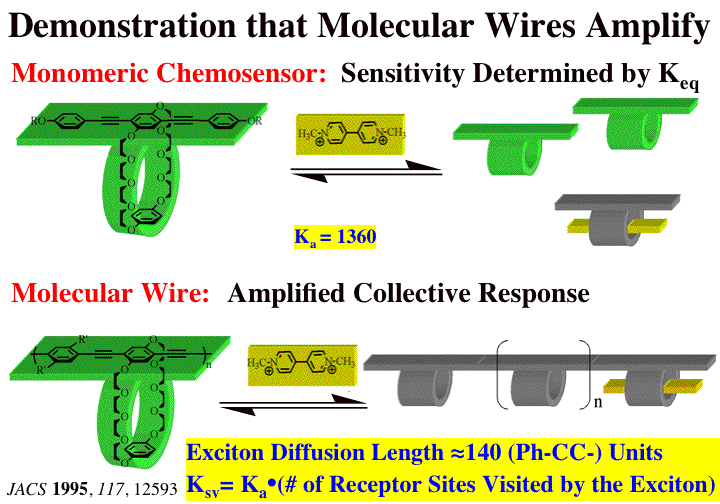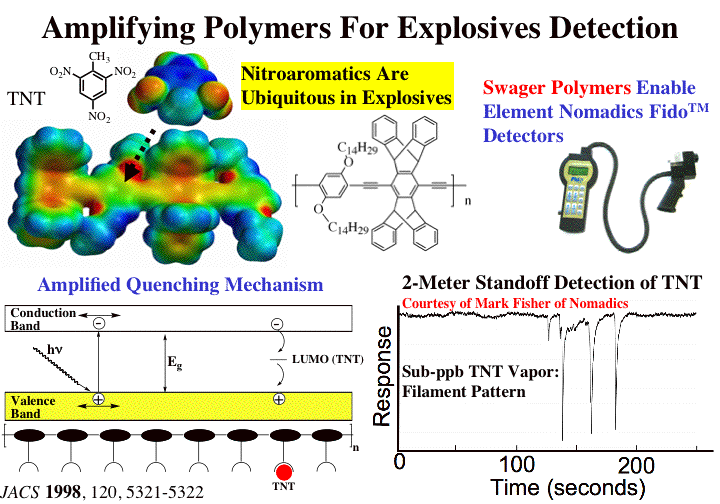![]()
In the 1990’s our group was the first to demonstrate the amplification possible with molecular wires for chemical sensors. We have designed many sensory systems since then and many other groups throughout the world use these methods/concepts.

Chemoresistivity-based sensory systems have been designed wherein molecular structures can be designed to have large resistance changes in response to a chemical of interest (analyte). Arranging these materials into structures that approximate the schematic structure wherein a single molecule spans two electrodes is an ongoing research effort.


The definitive study that proved that molecular wires (electronic polymers) amplify was accomplished on isolated molecules in solution. These methods have been extended to detect the high explosive TNT and are the basis of the most sensitive explosives detectors ever produced. These detectors are called Fido™ (Nomadics Inc.) in reference to the fact that like dogs they detect explosives vapors (smells) rather than particles as is required by the much less sensitive conventional ion mobility spectrometers that are used at airports.
